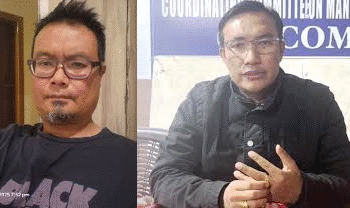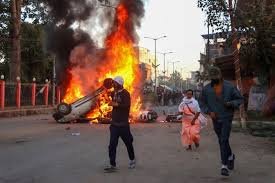As investigators probe the deadly Air India crash, whistleblower warnings resurface. Two men who spoke out are now dead; a third faces retaliation. Was the Dreamliner tragedy preventable?
BY PC Bureau
June 13, 2025— The fatal crash of Air India Flight AI171, a Boeing 787-8 Dreamliner, has cast a fresh spotlight on long-standing safety concerns tied to Boeing’s Dreamliner program—concerns that whistleblowers had raised years before. The June 12 disaster, which killed 265 people when the London-bound jet slammed into a hostel at BJ Medical College shortly after takeoff, now ranks among India’s worst aviation catastrophes.
Authorities, after initially reporting higher numbers, confirmed the revised death toll of 265 to avoid double-counting dismembered remains. Only one person survived the fiery wreck. A black box has been recovered, offering investigators a crucial path to uncover the sequence of events.
READ: Air India Crash Toll Hits 265 With 24 Ground Fatalities
Investigators Probe Dreamliner’s Airworthiness
India’s Aircraft Accident Investigation Bureau is spearheading the probe, with support from U.S., UK, and Boeing representatives. A distress call—“MAYDAY”—was transmitted moments after liftoff, pointing to a possible bird strike or engine failure. But the spotlight is now on the aircraft model itself.
A Boeing whistleblower told senators the company repeatedly ignored and threatened him when he raised safety concerns about their aircraft.
“I was told to shut up, I received physical threats … My boss said, ‘I would have killed someone who said what you said in a meeting.’” pic.twitter.com/NbWwH2Ds4P
— POLITICO (@politico) April 17, 2024
“Ticking Time Bomb”: Salehpour’s Chilling Warnings
Boeing engineer and whistleblower Sam Salehpour repeatedly flagged serious structural flaws in the 787 Dreamliner. In a 2024 complaint to the U.S. FAA, Salehpour alleged Boeing employed improper assembly techniques, including forcing misaligned fuselage sections together—sometimes by having workers jump on them. He warned this could result in microscopic fatigue cracks compromising the airframe over time.
READ: Indian Markets Plunge as Israel-Iran Tensions Escalate
He also accused Boeing of dismissing his warnings over three years and fostering a culture that ignored internal safety red flags. Salehpour estimated over 1,000 aircraft could be compromised. Though Boeing denied his claims and insisted the aircraft remains airworthy, the crash has reignited global fears.
Whistleblower Deaths Add Grim Context
The gravity of the crash is amplified by the eerie deaths of two Boeing-related whistleblowers:
-
John Barnett, a former Boeing quality manager, died by alleged suicide in March 2024 while deposing in a lawsuit against the company. His family has since filed a wrongful death suit, alleging Boeing’s retaliation pushed him over the edge.
-
Joshua Dean, a Spirit AeroSystems quality auditor who flagged defects in fuselage manufacturing, died from a fast-spreading MRSA infection in May 2024. Dean had alleged retaliation and was abruptly fired after raising alarms.
READ:
Former Boeing whistleblower known for raising concerns about the firm’s production standards has been found dead in the U.S. pic.twitter.com/ZdXMP2xwpS
— Breaking Aviation News & Videos (@aviationbrk) March 12, 2024
Though both deaths were officially ruled as unrelated to foul play, the back-to-back nature—and the whistleblower status of both men—has stirred widespread speculation and concern about accountability within the aerospace sector.
READ: Israel Strikes Iran’s Nuclear Sites, Tehran Vows Retaliation
With international investigators now examining the AI171 crash, Salehpour’s dire warnings have taken on new urgency. The sole survivor’s account, along with black box data, could provide clarity. But already, the tragedy has rekindled debates about Boeing’s manufacturing culture, its oversight, and the risks borne by those who dare to speak out.
Air India has set up helplines and support centers for grieving families in Ahmedabad, Delhi, Mumbai, and London, pledging financial assistance and full cooperation with investigators.
As scrutiny mounts, the AI171 disaster may well prove to be a turning point—one that not only questions the integrity of the Dreamliner, but the cost of silencing those who tried to prevent a tragedy.













